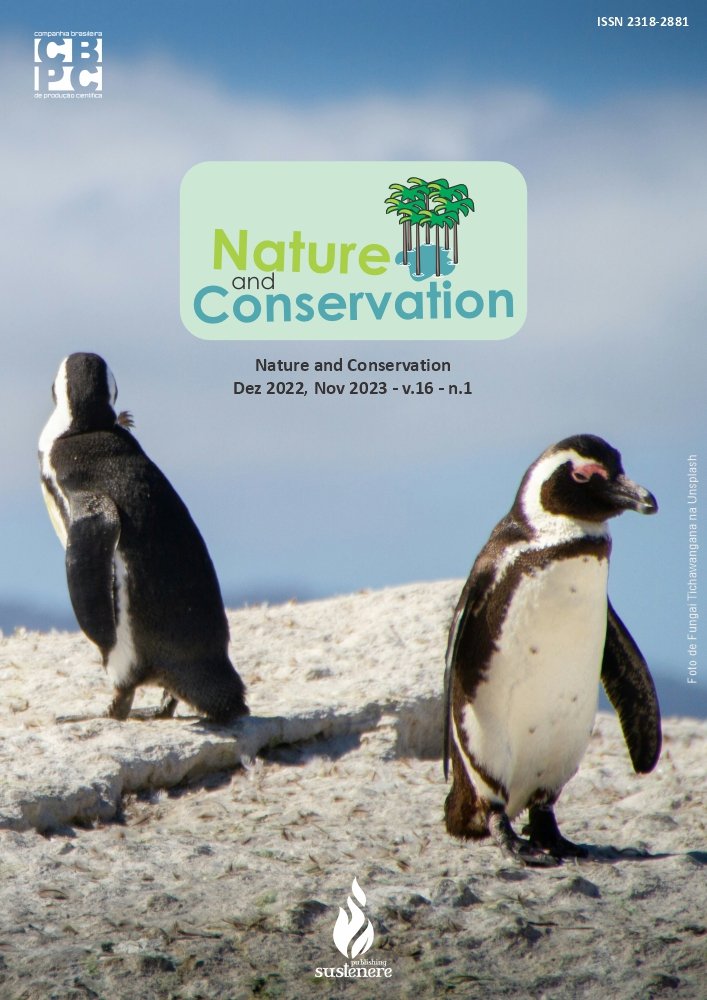Quantitative anatomy of Eschweilera leaves in a firm lans forest in Central Amazon
DOI:
https://doi.org/10.6008/CBPC2179-6858.2022.011.0012Keywords:
Amazon, Climatic seasonality, Stomatal modulationAbstract
Despite the importance of the role of stomata, there is still a scarcity of studies that relate the quantitative anatomy and climatic aspects of leaf development, especially for plants that occupy the upper stratum of the forest canopy in Central Amazon. Thus, the study aimed to investigate the characteristics of the quantitative anatomy of the leaf blades of trees of the Lecythidaceae family that produced leaves in the periods of lower and higher rainfall: dry and rainy seasons, respectively, in a firm land forest in Central Amazonia. The study was conducted in the period of lowest and highest rainfall, in a firm land forest in Central Amazon. The meteorological data of the place were obtained by a set of sensors that are installed in an 80 m high tower. The variables were: (a) air temperature, (b) precipitation, (c) soil water content and (d) relative air humidity. While photosynthetically active radiation (PAR) were obtained directly from the NASA website. In the study area, three trees belonging to the Lecythidaceae family that produced leaves in the two seasonal periods (in the period of higher and also of lower rainfall), both of the genus Eschweilera, were identified. From these trees, a total of 9 branches were collected, and from these selected a total of 27 leaves, from which 162 epidemic fields of leaf blades were sampled. Quantitative anatomy was determined at the epidermis level on the leaf blades. And the parameters determined were: polar (DP) and equatorial (DE) diameters of the stomata (µm), ratio between DP by DE (DP/DE) that expresses the maximum potential of stomatal opening, stomatal area (AE), stomatal density and (rE) which indicates the number of stomata (φ) in a given area (φ.mm2), and the stomatal index (IE) expressed as a percentage. The variation between the more and less rainy period did not determine changes in all individuals in the same way, but the E. cyathiformis plants responded differently to the change of season where one of the plants modified the DP/DE ratio and the other changed the density pattern. stomata (rE) suggesting greater elasticity in relation to climate variation. The changes in environmental conditions, determined by the decrease in rainfall in the region, determined increases in the stomatal density of plant 92 without increasing the total stomatal area. And for plant 123, which has the largest stem diameter, it determined increases in the values of maximum potential opening, polar and equatorial diameter ratio of the guard cells.
Downloads
Downloads
Published
Issue
Section
License
Copyright (c) 2023 Ibero-American Journal of Environmental Sciences

This work is licensed under a Creative Commons Attribution-NonCommercial-NoDerivatives 4.0 International License.
The CBPC - Companhia Brasileira de Produção Científica (Brazil CNPJ: 11.221.422/0001-03) the material rights of the published works. The rights relate to the publication of the work anywhere in the world, including rights to renewals, expansions and dissemination of the contribution, as well as other subsidiary rights. All electronically published works may subsequently be published in printed collections under the coordination of this company and / or its partners. The authors preserve the copyright, but are not allowed to publish the contribution in another medium, printed or digital, in Portuguese or in translation.









